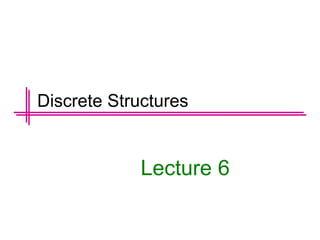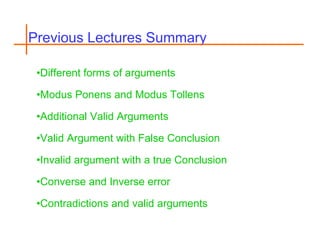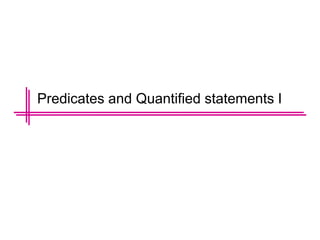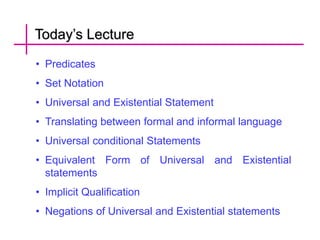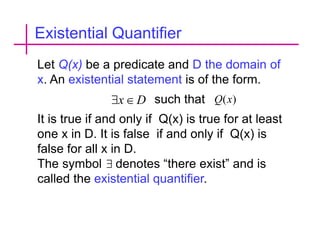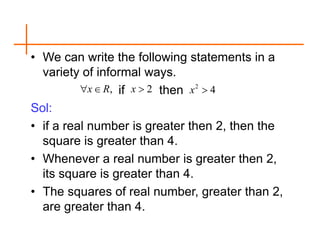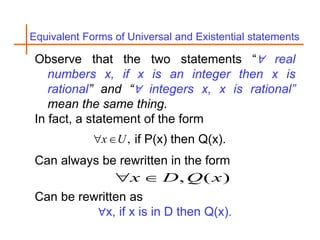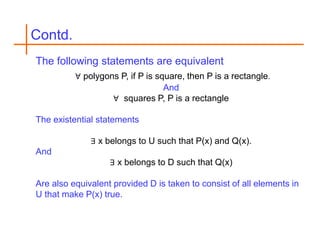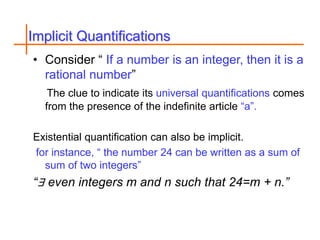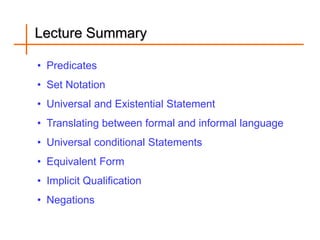The document summarizes key concepts from a lecture on discrete structures, including:
1) It defines predicates as sentences containing variables that become statements when values are substituted, and introduces truth sets as the set of elements making a predicate true.
2) It discusses universal and existential statements, where a universal statement is true if a predicate is true for all variables, and an existential is true if true for at least one variable.
3) It explains translating between formal quantified statements and informal English statements, and shows several examples of translating in both directions.
